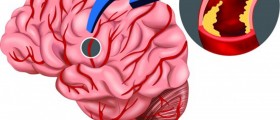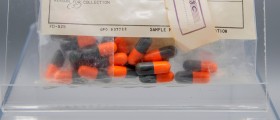
Acute tubular necrosis or ATN is a medical condition identified as one of the most common causes of acute kidney injury. This condition can be provoked by some acute event, which by nature, could be either toxic or ischemic.
Ischemic ATN can be the part of pre-renal azotemia and both of these conditions have the same risk factors and causes. Problems such as different hypovolemic states (due to bleeding, burns or renal or gastrointestinal losses) and low cardiac output, seen in pericardial disease, tamponade, arrhythmia, valvulopathy, heart failure and other myocardium diseases are known to lead to ATN and/or pre-renal azotemia. Systemic vasodilation in people suffering from anaphylaxis (severe allergic reaction) or sepsis and disseminated intravascular coagulation (DIC) can also provoke the same medical problems.
As mentioned, ATN may also be the consequence of some toxic event, because of the direct toxic effects of the drugs, intra-renal Vasoconstriction and intra-tubular obstruction. So, ATN explanation may also include the use of drugs known to cause renal Vasoconstriction, which includes epinephrine, norepinephrine, Cyclosporine and amphotericin B, as well as patients suffering from hypercalcemia. ACE (angiotensin converting enzyme) inhibitors, COX (cyclooxygenase) inhibitors and ARBs (angiotensin receptor blockers) can provoke similar problem, affecting the renal auto-regulatory response.
Phases of Acute Tubular Necrosis
ATN is known to have 3 phases, known as initiation, maintenance and recovery. Initiation phase is characterized by very low glomerular filtration rate (GFR) and sudden increase of creatinine in the serum and urea nitrogen in the blood (BUN – blood urea nitrogen).
Maintenance phase of the acute tubular necrosis also has characteristically low GFR. In general, this phase lasts for a week or two. Very low rate of glomerular filtration causes further increase of serum creatinine and blood urea nitrogen.
In the recovery phase of ATN tubular function is restored. If the patient was suffering from oliguria during the previous phase, there is some increase in the volume of urine. Patients also experience steady increase of serum creatinine and BUN up to the level before the injury.ATN Diagnosis and Treatment
To identify the causes of this condition doctors commonly use patient’s medical history, physical exam and some laboratory tests, like urinalysis and ultrasonogram. Diagnosis of ATN includes FeNA of fractal excretion of sodium, which should be higher than 3%, as well as the presence of some myddy casts in the urine. Histopathology reveals localized necrosis of the epithelium of renal tubules, focal rupture or some loss of basement membrane.
Prevention and avoidance of further damage of the kidneys, accompanied with the treatment for the underlying medical problems are the main courses of ATN treatment. Complications of this condition usually require aggressive approach.






Your thoughts on this
Loading...